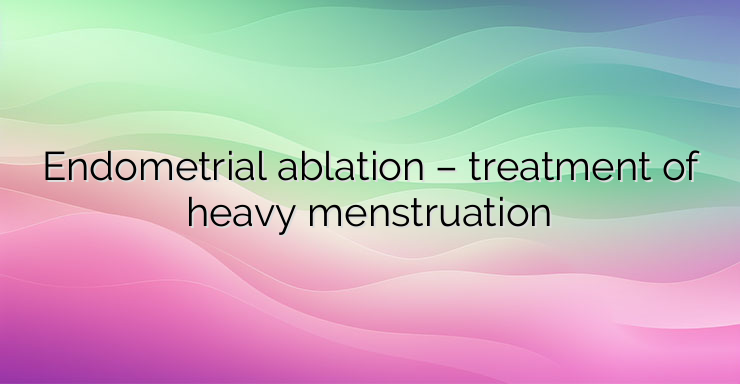Endometrial ablation is a procedure that uses heat, cold, or different types of energy to destroy the tissue that lines the uterus in order to reduce bleeding during menstruation. Heavy menstruation can be observed for many reasons. There are different methods used to ablate the endometrium, but they all involve destroying a layer of tissue that covers the inside of the uterus. For heavy and profuse menstrual bleeding, endometrial ablation is the preferred method over hysterectomy. After the procedure, the bleeding may decrease, stop completely, and in very rare cases, there may be no change in the character of the menstrual cycle. Menstruation is considered heavy if it leads to anemia, with heavy monthly bleeding, lasts more than 7 days and interferes with normal activities. Endometrial ablation can help control heavy and heavy periods when taking medicamnets does not have the desired effect. The procedure helps by specifically destroying and removing the uterine lining. Therefore, endometrial ablation can be applied to women who do not want to become pregnant. Endometrial ablation falls between hysterectomy and IUD insertion in invasiveness in the treatment of abnormal uterine bleeding. The first choice in treating this condition should be the insertion of an intrauterine device, as the procedure is the least invasive. Before undergoing endometrial ablation, however, patients should be aware of several facts about the procedure. Women must be convinced that they do not wish to become pregnant. Ablation damages the uterine lining and then embryo implantation would fail. Ablation is usually performed after the end of menstruation and after previous curettage. This protocol improves visibility for performing endometrial ablation techniques. It’s a common procedure, but it still destroys tissue, meaning it carries risks of heavy bleeding, an allergic reaction, rupture of the uterus, or even damage to organs near the uterus. The technology, which turns healthy tissue into connective tissue, is designed to be precise so that only a safe portion of the uterine lining is actually destroyed and risks are minimized. During the post-procedure recovery period, patients may report pain that can be controlled with non-steroidal anti-inflammatory drugs. The pain subsides in the first 24 hours after the procedure. It is recommended that women abstain from intercourse for at least seven days after the procedure. Light vaginal bleeding or pink discharge is acceptable to notice within a few weeks. References: 1. ACOG Committee on Practice Bulletins. ACOG Practice Bulletin. Clinical management guidelines for obstetrician-gynecologists. (https://pubmed.ncbi.nlm.nih.gov/17470612/) Number 81, May 2007. Obstet Gynecol. 2007; 2. Kohn JR, Shamshirsaz AA, Popek E,Guan X, Belfort MA, Fox KA. Pregnancy after endometrial ablation: a systematic review. (https://pubmed.ncbi.nlm.nih.gov/28952185/) BJOG. 2018; 3. Shilpa D, Flora K, Atiomo W. A survey of preferences and practices of endometrial ablation/resection for menorrhagia in the United Kingdom. (https://pubmed.ncbi.nlm.nih.gov/18083167/) Fertil Steril. 2008;


Leave a Reply